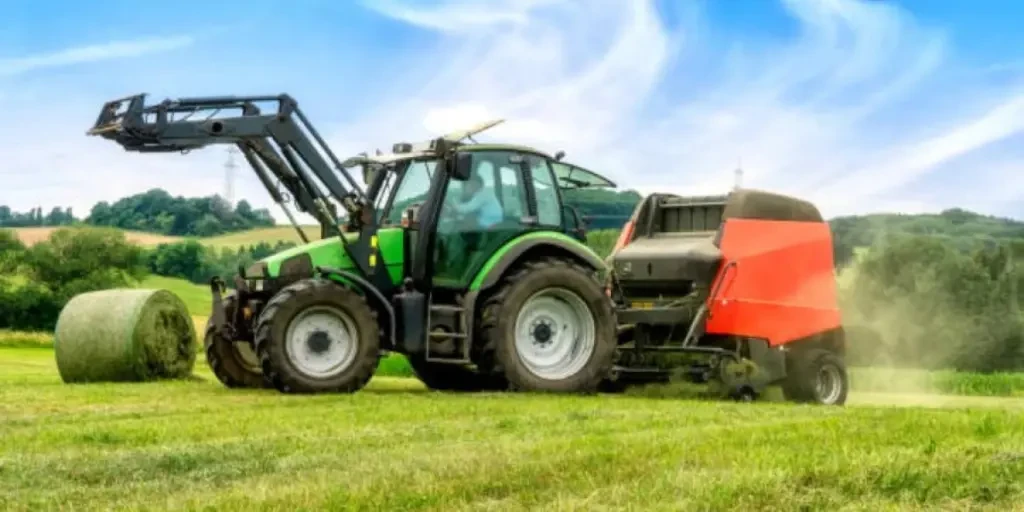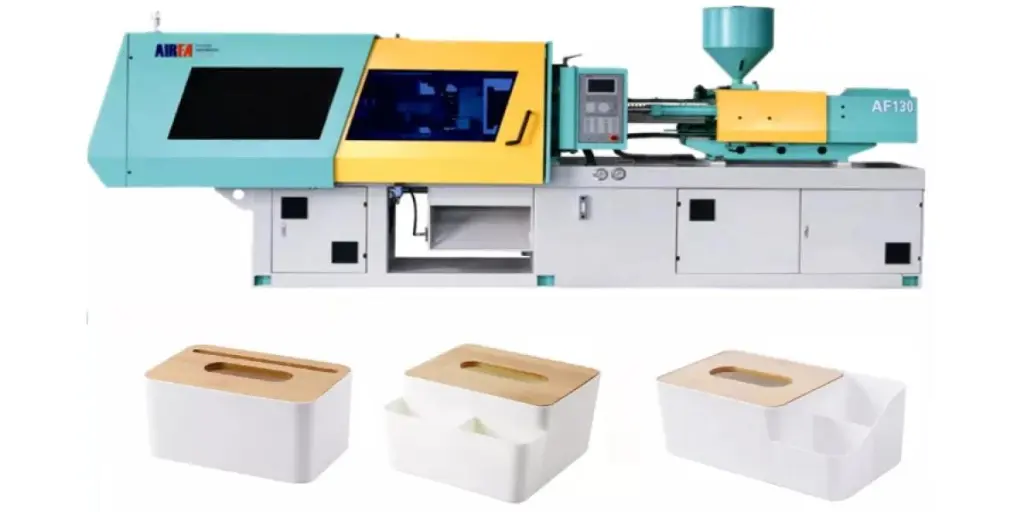A baler is a machine that compresses and binds materials such as hay, straw, paper, cardboard, or plastic into a compact bale. Balers are commonly used in agriculture, recycling, and waste management industries. There are several types of balers, including round balers, square balers, and rectangular balers. Each type of baler is designed for specific materials and has its own advantages. Balers save on space by compressing materials into bales which makes them easier to store and transport.
This article will offer a brief overview of the balers market, before explaining the different types of balers available and how to select the right one.
Table of Contents
Overview of the balers market
Types of balers
A guide to selecting balers
Summary
Overview of the balers market
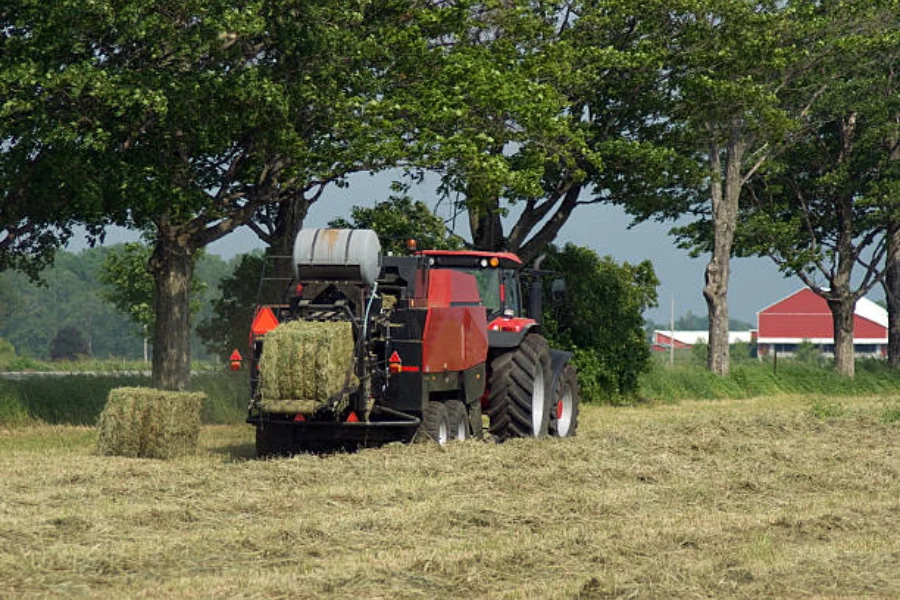
The global balers market has been characterized by a significant degree of competition as the manufacturers strive to achieve an international presence. Some of these prominent producers are AGCO Corporation, CNH Industrial N.V., CLAAS KGaA mbH, and Deere & Company. The balers market is segmented by product type and region.
Grand View Research reported a global balers market value of USD 5.1 billion in 2019. It was further projected to expand at a compound annual growth rate (CAGR) of 8.9% from 2020 to 2027. During the forecast period, the growth will be driven by technological advancements in the agricultural industry. The development is focused on fulfilling the increasing food demand and improving farm yields.
Based on the product, round balers registered the largest market share of 55.2% which was attributed to their lower power requirement when making mini round bales. Square balers are further categorized into small and large balers. Small square balers accounted for 59.56% of the market share. Regionally, Asia Pacific held the largest market share at 36.7% due to the presence of key baler manufacturers in the region. Also, the growth in livestock farming across the area is expected to fuel the surge in the market for balers during the forecast period.
Types of balers
1. Round balers

Round balers are used to create large and round bales of straw or hay. The baler is usually pulled behind a tractor through a grass or straw field. As it moves, the baler’s pickup mechanism at the front of the machine collects the straw or hay into the machine. Afterward, inside the baler are a series of belts and rollers that tightly roll the plant material.
As the hay or straw enters the machine, the bale gets larger in size. When the bale reaches an average size of about 5 or 6 inches, the mechanism is triggered to wrap the bale in a mesh or twine netting. The baler then opens up and the finished bale rolls out at the back of the machine.
Pros
- They require lower horsepower with 15 hp being enough to operate a mini-round baler
- Round balers are lighter in weight and thus can be used on hills and can be easily pulled
- They come in simple designs and thus are easy to operate and have fewer adjustments
- The bales made from round balers offer better rainy weather resistance as they are hard to penetrate
Cons
- They have a lower output capacity as some have small pickups
- The bales created from round balers are hard to stack
2. Square balers
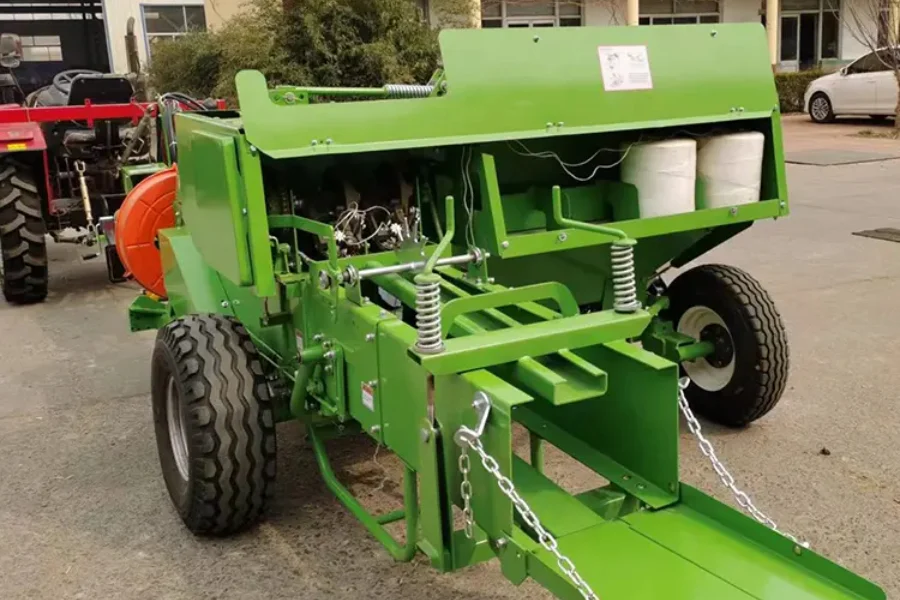
Square balers are used to cut, compress, and rank hay or straw into square-shaped bales that are easy to handle when storing and transporting. The bales are meant to dry and preserve the intrinsic nutritional value of the bundled hay or straw. Square balers are highly cost-effective as they require less energy to produce bales of up to 1200 kg.
Pros
- They offer a higher baling capacity because there is no need to stop and tie or wrap bales
- Square balers have an adjustable length ranging from 16 to 51 inches thus providing convenience with bale sizes
- The square bales are easy to handle due to their shapes especially when stacking
- Most consumers prefer easy and familiar square-shaped bales made from square balers
Cons
- The equipment is quite heavy thus posing hazards when being operated on hills or slopes
- In case of rain, the bales have less resistance to moisture and thus can spoil faster
- The machines are quite complex in terms of operations and adjustments
A guide to selecting balers
1. Budget
The budget allocated for the purchase of a baler is dependent on the tasks to be carried out. Generally, square balers can handle heavier jobs as compared to round balers. As a result, square balers are more expensive than round balers in the same category. This makes it difficult to purchase large square balers for small-scale field operations. The average cost of agricultural balers starts from around USD 2700. Added to the upfront costs, buyers should also consider the maintenance and accessories costs of the specific balers.
2. Crop
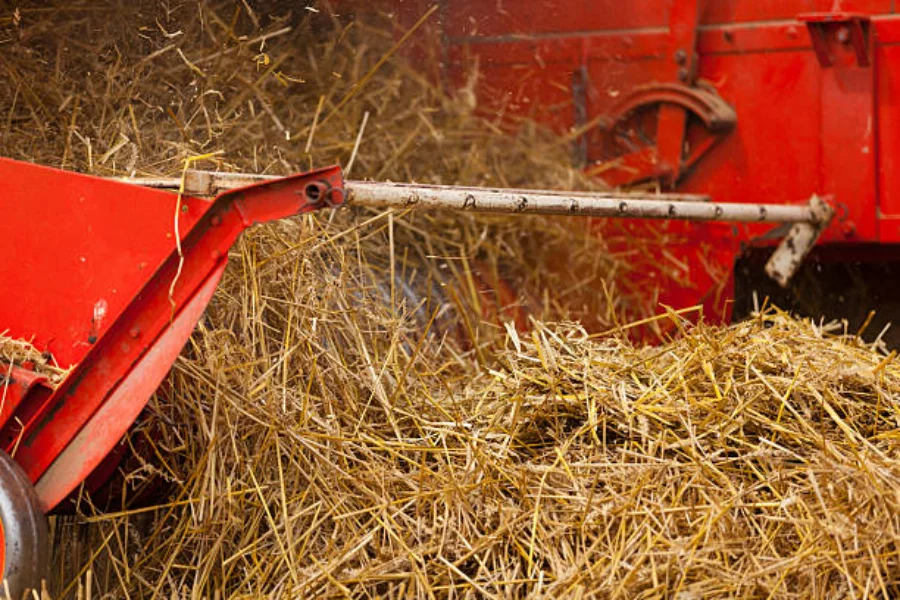
Generally, baling different types of grasses and crops require different types of balers. Buyers should be aware that all these types of crops are handled differently based on compression and moisture levels. Crops that need more moisture are well handled by a fixed-chamber round baler. Drier crops, on the other hand, require tighter compressing and thus will require a variable-chamber baler style because of its flexibility.
3. Power
Power to operate the balers is supplied by tractors, which means the horsepower of the tractor should be taken into consideration. On a general basis, square balers require more horsepower than round balers. In this case, buyers should check the required horsepower to make sure their primary machines are suited for the tasks. On average the PTO horsepower requirements for round balers range from 30 to 120 hp. On the other hand, the average horsepower requirements for square balers start at around 62 to 75 hp.
4. Speed
Most manufacturers are aiming at making balers that can make more bales, more reliably, and more quickly. This depends on the sturdiness and bale size of the baler and the kind of tractor used to pull the baler. Also, the speed is based on the change in moisture conditions of the crop being handled. For instance, the John Deere 960 round baler can manage up to 127 bales per hour.
5. Versatility
The versatility of balers is determined by their shape, handled material, available chambers, and working conditions. Buyers should make sure that the machines are designed to handle the type of material and environment. Both fixed and versatile chambers have advantages. However, the choice between the two is dependent on the kind of task to be done. For instance, fixed-chamber round balers are simplified mechanically. They produce bales that are less dense and thus can easily feed smaller animals. On the other hand, variable-chamber round balers offer flexibility when it comes to the bale size. Denser bales do not allow moisture penetration which improves the quality of the product.
6. Bale size
Balers are mostly chosen based on the type of hay or straw bale they produce. Also, baler selection takes into account the shape and quality of the bale. This enhances the ease by which it will be transported and stacked. Usually, bales get heavy as they are tied and stacked together. The two common types of balers are square and round balers. These machines produce differently-sized bales with the square hay balers producing the bigger ones. The average size of a square bale of hay is about 14 inches high, 18 inches wide, 35 inches long, and weigh between 50-60 lbs. On the other hand, small round balers produce a bale size of about 4 feet wide and 5 feet in diameter while large round balers can give approximately 8 feet and 6 feet diameter bales.
Summary
Among the several choices of balers available on the market today, buyers should seek the most suitable models for their various needs. The two major types (square and round) of balers offer certain advantages and have their specific downsides. Small-scale farmers will likely not go for large round or square balers because they may not have sufficient horsepower tractors to handle the balers. As such, the above guide highlights the most important factors to consider when choosing the appropriate baler. To learn more, and browse listings of great-quality balers, visit Alibaba.com.
